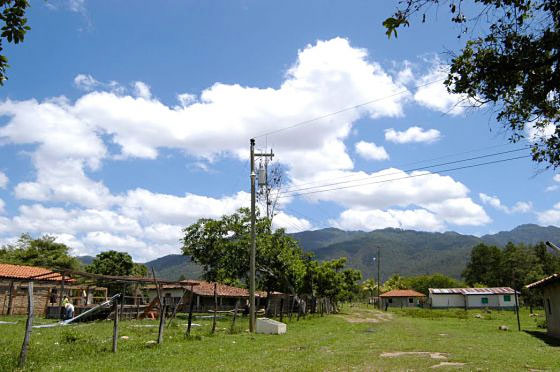Have you ever dreamed about moving to the countryside, far from the air pollution, noise and traffic of the city?
For many people it is a dream, but it can be a nightmare for others who already live there. Imagine getting up on an icy morning and having to take a freezing cold shower before work or school or other daily activities, which you can only do during daylight hours. Imagine having to depend on kerosene, wood or coal for cooking and being practically isolated from the outside world with no cellphone, radio or television.
Surprisingly in the 21st century, this doomsday scenario is a reality for the more than 18% of the world’s population without electricity.
According to the World Bank's Global Tracking Framework, over 1.1 billion people around the world do not have access to electricity. Although there has been some improvement, the large number of Latin American families without access to this resource has become a major obstacle for the development of technology, education and health, particularly in rural areas.
How is electric power supplied in rural areas?
In several countries of the region, there are two main ways to increase electric service in rural areas. This first is to expand the network of power lines of electric companies. The second is to install solar panels, which are connected to a network that supplies electricity to households in the most remote areas.
Access to electricity contributes to reducing the use of kerosene lamps, which can be harmful to the respiratory system, and of candles, which are a safety hazard. Having light during the evening hours also increases the amount of time people have to do household chores and study. It also increases rural residents’ possibilities for obtaining an education and developing economic activities.
The usefulness of electricity is not limited to the home. Having electric power in rural health centers ensures adequate refrigeration for storing medicines and vaccines, and sterilizing equipment for medical instruments. Additionally, street lighting helps make communities safer.
In search of light
Rural electrification has been expanding in Peru. Electricity coverage in rural areas increased from 30% in 2007 to 75% in 2014, thanks to initiatives such as FONER, which has been providing electric power to schools, hospitals and community centers since 2006.
An investment subsidy was also created to make rural electrification more attractive to electric companies. Additionally, a regulated tariff was established for solar-powered service in rural areas. This has enabled some 105,000 new household connections, benefiting 450,000 rural residents.
Additionally, more than 260,000 rural firms used electricity to produce textiles and cereals, coffee, dairy products and other foodstuffs. These companies increased their incomes and productivity by using electric equipment such as heating systems for livestock, cold systems for agriculture, food processing equipment and pumping stations, among others.
This was the experience of Sarita De la Cruz, which makes chocolate and cocoa-based products.
“Initially, I couldn’t run my equipment because we did not have access to three-phase electric power. Before we had electricity, we produced 30 kilos of chocolate monthly; now we produce 350 kilos. The 10 families in our organization work with about 30 cocoa producers.”


